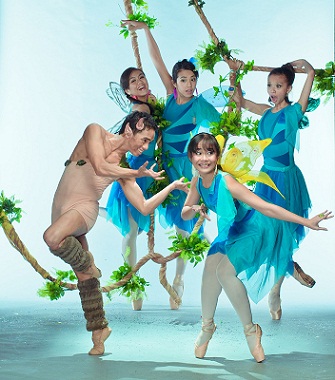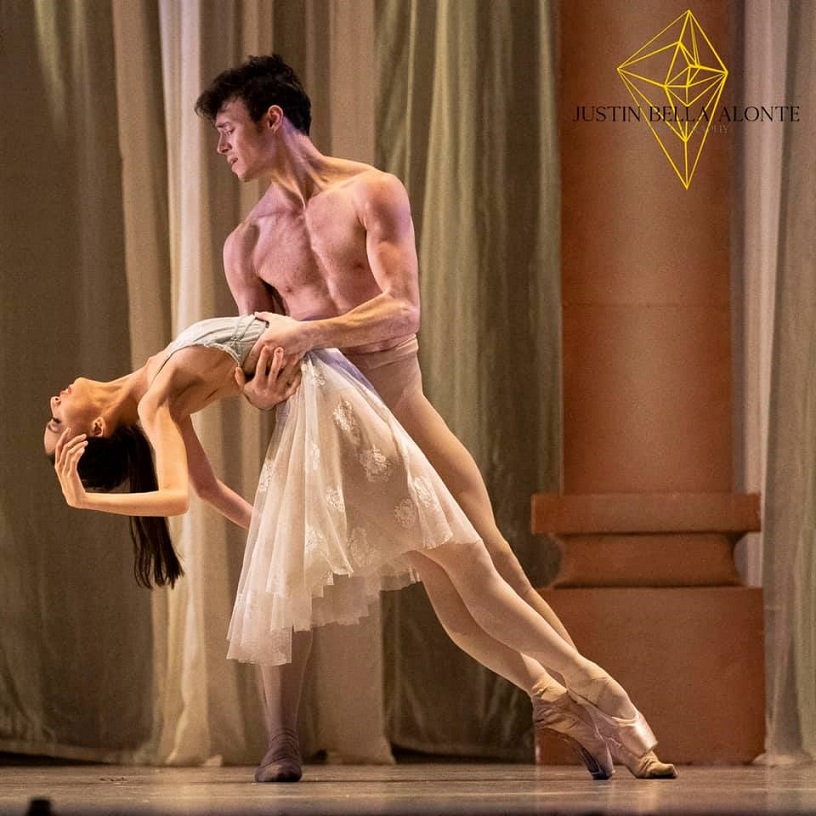By PABLO A. TARIMAN
 THE opening of Carlo Pacis’s “A Midsummer Night’s Dream” at the CCP Friday night showcased a totally new generation of dancers, not to mention an equally young emerging choreographer brimming with new ideas.
THE opening of Carlo Pacis’s “A Midsummer Night’s Dream” at the CCP Friday night showcased a totally new generation of dancers, not to mention an equally young emerging choreographer brimming with new ideas.
When Ballet Philippines artistic director Paul Alexander Morales acknowledged the company’s co-founder, Eddie Elejar, the gala audience saw the connection between the old guards and new blood of Philippine ballet.
Before this new version of the ballet based on Shakespeare play, Alice Reyes mounted her version in 1976 with unique stage design by now National Artist for Design Salvador Bernal. In the earlier version, Effie Nanas was Titania, Nonoy Froilan was Oberon NS Tony Fabella essayed the role of Puck. Another version had the Titania of Cecile Sicangco and the Oberon of Brando Miranda and also the Titania of Sofia Zobel.
In 1989, Edna Vida also did her earlier version of the Shakespeare-inspired ballet with Conrad Dy-Liacco as Puck
For some reasons, the earlier Alice Reyes version of Ballet Philippines’ “Midsummer Night’s Dream” was never documented.
“Alice Reyes’s version is a really good ‘lost work.’ We have records of written reviews that all say it was great but there is no recording of the actual ballet,” laments Morales.
Last December, Reyes restaged Rama Hari and connected with the young dancers who are full of energy and focus despite the meager financial returns of the profession.
This rule in economics resulted in some local budding talents grand jete-ing to other regional companies in Asia with higher salary bracket.
Morales admits, “At Ballet Philippines, we are aware that we can hardly compete with the opportunities and salaries that other companies in the region can offer. Nonetheless we try to feature as many talents as we can, believing that this circle of training, performance and creation will ultimate contribute towards the betterment of Philippine dance.”
On the other hand, Pacis is himself a mainstay of Hong Kong Ballet where he metamorphosed as dancer, teacher and choreographer. His unique choreographic ideas led him to the Asia Pacific Ballet Festival in Korea where his work, “There’s A Fly in This Soup,” made its first Asian premiere to good reception. He also got to work with Opera Hong Kong where he choreographed a dance sequence in the Verdi opera, “Aida.”
 In the truest sense, true dancing is not really about salaries and financial security. The spectacle of young dancers fleeing to Hong Kong Disneyland for better salary is admittedly artistic suicide but a fairly acceptable financial alternative.
In the truest sense, true dancing is not really about salaries and financial security. The spectacle of young dancers fleeing to Hong Kong Disneyland for better salary is admittedly artistic suicide but a fairly acceptable financial alternative.
What financial security does to dancers is a stuff of a possible special report on dance and what fairies do to ordinary mortals is the meat of Pacis’s edifying ballet version of the Shakespeare play, “A Midsummer Night’s Dream.”
Using the original music of Mendelssohn in the first act and later shifting to the second movement of a violin concerto by the same composer, the ballet was at once magical with the competent lighting design of John Batalla and the set design of Eric Cruz enhanced by highly imaginative video design of Andre Cawagas.
What’s immediately impressive from the first to the last act was the Puck of Cyril Aron Fallar who brilliantly portrayed in dance what he could have been delivering in the stage version:
“Thou speak’st aright;
I am that merry wanderer of the night.
I jest to Oberon and make him smile
When I a fat and bean-fed horse beguile,
Neighing in likeness of a filly foal:
And sometime lurk I in a gossip’s bowl,
In very likeness of a roasted crab…”
 What’s formidable about this ballet was the youthful ensemble blending magically with the equally youthful soloists.
What’s formidable about this ballet was the youthful ensemble blending magically with the equally youthful soloists.
Highly commendable was the Demetrius of Earl John Arisola, the willowy Helena of Carissa Adea, the highly marked Lysander of Jean Marc Cordero, the Hermia of Charmaine Bianca Perez and the Love-in-Idleness flower of Gillianne Gequinto.
This must be the special night of Richardson Yadao as Oberon and Katherine Trofeo as Titania. Their characters are well-defined in the solo variations and their pas de deux was solid as they were light and gossamer and made straight from fairyland.
Shakespeare’s plays are indeed difficult to recreate in ballet owing to its multifaceted characters. The choreographer’s big concern was how movement constrained within a musical phrase, would succinctly tell a story were Shakespeare’s verses were silent. And so he pared the story down to bare essentials.
On the whole, Pacis succeeded in his goal to recreate the ballet’s beautiful contrasts: fairy vs. human, city vs. forest, conflict vs. resolution and indeed not to mention the many facets of love.
For as Shakespeare once noted:
“Lovers and madmen have such seething brains
Such shaping fantasies, that apprehend
More than cool reason ever comprehends.”





